Order Artiodactyla Genus PorculaHodgson, 1847 Higher classification Pig | Phylum Chordata Scientific name Porcula salvania Rank Species | |
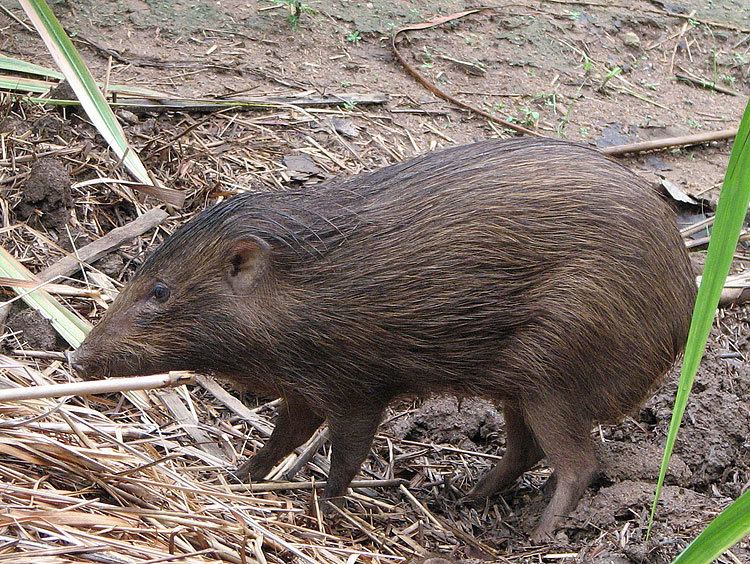 | ||
Similar Pig, Hogs and pigs, Bornean bearded pig, Celebes warty pig, Philippine warty pig | ||
The pygmy hog
The pygmy hog (Porcula salvania) is a critically endangered suid, previously spread across India, Nepal, and Bhutan, but now only found in Assam. The current world population is about 150 individuals or fewer. Recent conservation measures have improved the prospects of survival in the wild of this critically endangered species.
Contents
- The pygmy hog
- Saving the endangered pygmy hogs of assam aired oct 2003
- Description and biology
- Taxonomy and systematics
- Status
- Conservation
- References
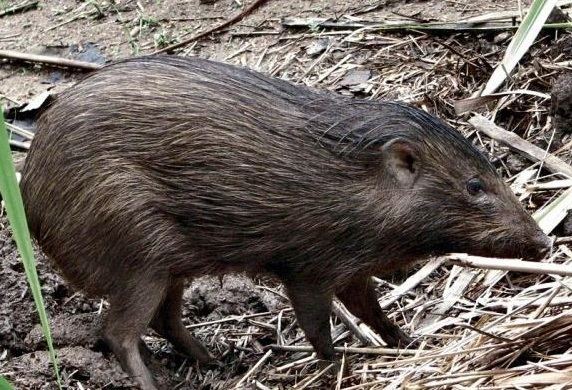
Saving the endangered pygmy hogs of assam aired oct 2003
Description and biology
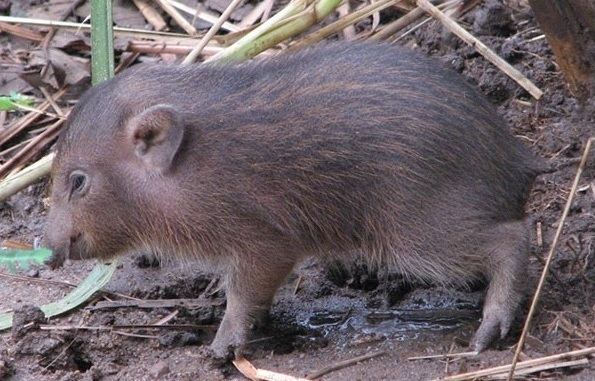
They are about 55 to 71 cm (21.5 to 28 in) long and stand at 20–30 cm (8–12 in), with a tail of 2.5 cm (0.98 in). They weigh 6.6–11.8 kg (15–26 lb). Their skin is dark brownish-black and the hair is dark. Piglets are born grayish-pink, becoming brown with yellow stripes along the body length. Their heads are sharply tapered and they have a slight crest of hair on their foreheads and on the back of their necks. Adult males have the upper canines visible on the sides of their mouths. They live for about eight years, becoming sexually mature at one to two years old. They breed seasonally before the monsoons giving birth to a litter of three to six after a gestation of 100 days. In the wild, they make small nests by digging a small trench and lining it with vegetation. During the heat of the day, they stay within these nests. They feed on roots, tubers, insects, rodents, and small reptiles.
Taxonomy and systematics

The species was first described as the only member of the genus Porcula, by Brian Houghton Hodgson but was later moved with other pig species in the genus Sus and named Sus salvanius. A 2007 genetic analysis of the variation in a large section of mitochondrial DNA suggested that the original classification of the pygmy hog as a distinct genus was justified. The resurrection of the original genus status and the species name Porcula salvania has been adopted by GenBank. The species name salvania is after the sal forests where it was found.
Status
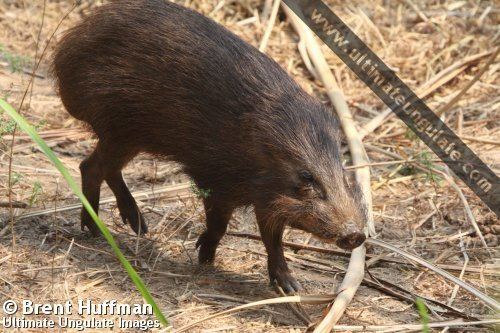
The pygmy hog is the sole representative of Porcula, making the conservation of this critically endangered species even more important, as its extinction would result in the loss of a unique evolutionary branch of pigs. They used to be widespread in the tall, wet grasslands in the southern Himalayan foothills from Uttar Pradesh to Assam, through Nepal and north Bengal. However, human encroachment has largely destroyed the natural habitat of the pygmy hog by development, agriculture, domestic grazing, and deliberate fires. Only one viable population remains in the Manas Tiger Reserve, but even there, threats due to livestock grazing, poaching, fire, and tigers persist. The total wild population has been estimated as less than 150 animals and the species is listed as "critically endangered". Their rarity contrasts greatly with the massive population of wild boars (Sus scrofa cristatus) in India.
Conservation
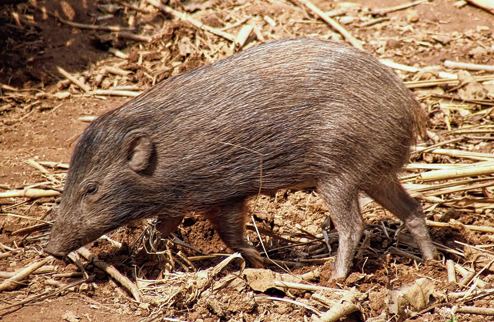
Conservation of the species has been hampered by the lack of public support, unlike that for charismatic South Asian mammals such as the Bengal tiger or Indian rhinoceros. Local political unrest in the area has also severely hampered effective conservation efforts, but these conflicts have now ceased.. The pygmy hog is designated as a Schedule I species in India under the Wildlife Protection Act, 1972 and offences against them invite heavy penalties.
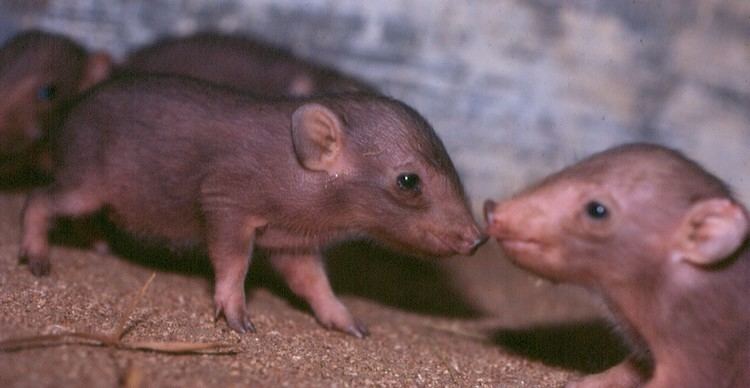
Pygmy hogs were exhibited in the zoos of London and Berlin in the 19th century. However, this captivity was not aimed at conservation, and none of the captive populations survived. Zürich Zoo exhibited pygmy hogs from 1976 to 1978, but all females died. The success of captive breeding dramatically increased after the Pygmy Hog Conservation Programme (PHCP) was established in 1995. The PHCP was established under the umbrella of a formal 'International Conservation Management and Research Agreement' by the Durrell Wildlife Conservation Trust, the IUCN's Pigs, Peccaries and Hippo Specialist Group, the Forest Department, Government of Assam, and the Ministry of Environment and Forests, Government of India. Durrell Wildlife Conservation Trust has launched a comprehensive conservation strategy including field status surveys of pygmy hogs and their habitats, behavioural studies, personnel training, local community awareness and assistance programmes, and the establishment of a highly successful captive-breeding programme at the Pygmy Hog Research and Breeding Centre in Assam. Active habitat management has been established and a reintroduction programme has now been launched. (Narayan, 2006).
